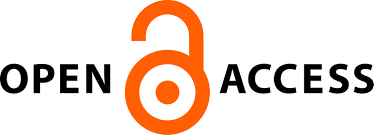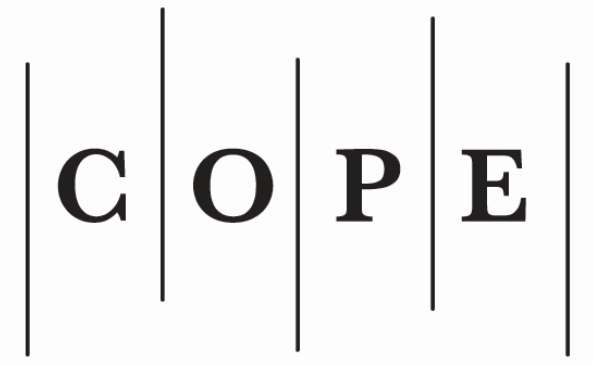Foresight as an e-Government Development Planning Component: Proposed e-Government Foresight Framework
##plugins.themes.bootstrap3.article.main##
Abstract
Despite the fact that e-government is developed by a country which is making the first steps in this area, or state, seeking to increase effectiveness of the existing e-government tools, it is necessary to have the methodology to create a basis for the formation of strategic e-government decisions, whose implementation will meet existing citizen needs and emerged challenges which appear during continuous information communication technology transformation processes.
One of the ways to respond to these requirements is the application of foresight exercises as a component of strategic e-government planning. Nevertheless in Lithuania and many other Eastern European countries, the planning process is still centralized, based on the five-year planning context. Ex communist states are behind other regions with the number of research based on the foresight methodology, so these conditions determine the lack of information in this domain and this article is a small part of the attempt to fill the existing vacuum.
The main aim of this article is to analyse the foresight impact on the electronic government strategic planning process, its role in the political decision formation process and by identifying contact points of different foresight research components, in the context of e-government foresight methodology framework creation processes, to form a deeper perception on how foresight works as a system.
This aim is determined by the following objectives—to analyse foresight concept, circumstances and causes of its origin, main guidelines, methods used during foresight exercises and reasons, which determine its application; also, to analyse different suggested foresight exercise approaches and according to the results of the analysis, to form a distinctive e-government foresight methodology, which can be used for already performed foresight analysis or for prototyping a planned one.
Thus, the first part of the article covers the most important theoretical aspects of foresight, its development guidelines, and roles in the different stages of the planning process. In the second, practical part of the article, conceptual methodology of e-government foresight is presented, which is made by linking findings, carried out in analysing particular foresight concepts, with different foresight framework analysis results.
The research methodology included literature analysis of different scientific sources, systemic analysis of different foresight methodologies and the creation of conceptual foresight framework.
Also e-government foresight conception, which describes the e-government foresight phenomenon and defines foresight place in the e-government strategic planning process, could be presented as the summarized conclusion of this article: e-government foresight is a process, which underlies e-government strategic planning, during the communication process of different partners, coordinating participants that are concentrated on longer term actions to achieve consensus on e-government development objectives and confidence in the e-government policy decision-making process, including the broad range of stakeholders.
One of the ways to respond to these requirements is the application of foresight exercises as a component of strategic e-government planning. Nevertheless in Lithuania and many other Eastern European countries, the planning process is still centralized, based on the five-year planning context. Ex communist states are behind other regions with the number of research based on the foresight methodology, so these conditions determine the lack of information in this domain and this article is a small part of the attempt to fill the existing vacuum.
The main aim of this article is to analyse the foresight impact on the electronic government strategic planning process, its role in the political decision formation process and by identifying contact points of different foresight research components, in the context of e-government foresight methodology framework creation processes, to form a deeper perception on how foresight works as a system.
This aim is determined by the following objectives—to analyse foresight concept, circumstances and causes of its origin, main guidelines, methods used during foresight exercises and reasons, which determine its application; also, to analyse different suggested foresight exercise approaches and according to the results of the analysis, to form a distinctive e-government foresight methodology, which can be used for already performed foresight analysis or for prototyping a planned one.
Thus, the first part of the article covers the most important theoretical aspects of foresight, its development guidelines, and roles in the different stages of the planning process. In the second, practical part of the article, conceptual methodology of e-government foresight is presented, which is made by linking findings, carried out in analysing particular foresight concepts, with different foresight framework analysis results.
The research methodology included literature analysis of different scientific sources, systemic analysis of different foresight methodologies and the creation of conceptual foresight framework.
Also e-government foresight conception, which describes the e-government foresight phenomenon and defines foresight place in the e-government strategic planning process, could be presented as the summarized conclusion of this article: e-government foresight is a process, which underlies e-government strategic planning, during the communication process of different partners, coordinating participants that are concentrated on longer term actions to achieve consensus on e-government development objectives and confidence in the e-government policy decision-making process, including the broad range of stakeholders.
##plugins.themes.bootstrap3.article.details##
Section
Articles
- The Author grants to the Publisher the exclusive right and licence to publish this Article without remuneration until the expiry of the economic rights: to reproduce the article in print and digital form, including its publication; to disseminate the original version of the Article or its copies in Lithuania and foreign countries; to translate the Article; to publish the article, including making it publicly available via computer networks; to reproduce and publish the Article in Lithuanian and foreign databases; to licence usage of the Article in ways described in this paragraph.
- The Author warrants that the economic rights of the Author have not been assigned or granted to third parties, that the Article has not been published so far and is not under consideration of being published elsewhere.
- The Author warrants that the Article does not violate intellectual property rights of others.
- After the Article is published in Social Technologies the Author shall have a right to make it public on personal website or on a website of an institution of affiliation, to reproduce it for non-commercial teaching or scholarly research purposes, clearly indicating that the primary source of its publication is Social Technologies.
- This consent shall be considered invalid if the Editorial Board of the Social Technologies decides not to publish the Article.
Authors contributing to Social Technologies agree to publish their articles under a Creative Commons Attribution 3.0 Unported (CC BY 3.0) Licence, allowing third parties to share their work (copy, distribute, transmit) and to adapt it, under the condition that the authors are given credit, and that in the event of reuse or distribution, the terms of this licence are made clear.







